解题思路:
以下两种方法均基于以下性质推出:当前树的深度 等于 左子树的深度 与 右子树的深度 中的 最大值 $+1$ 。
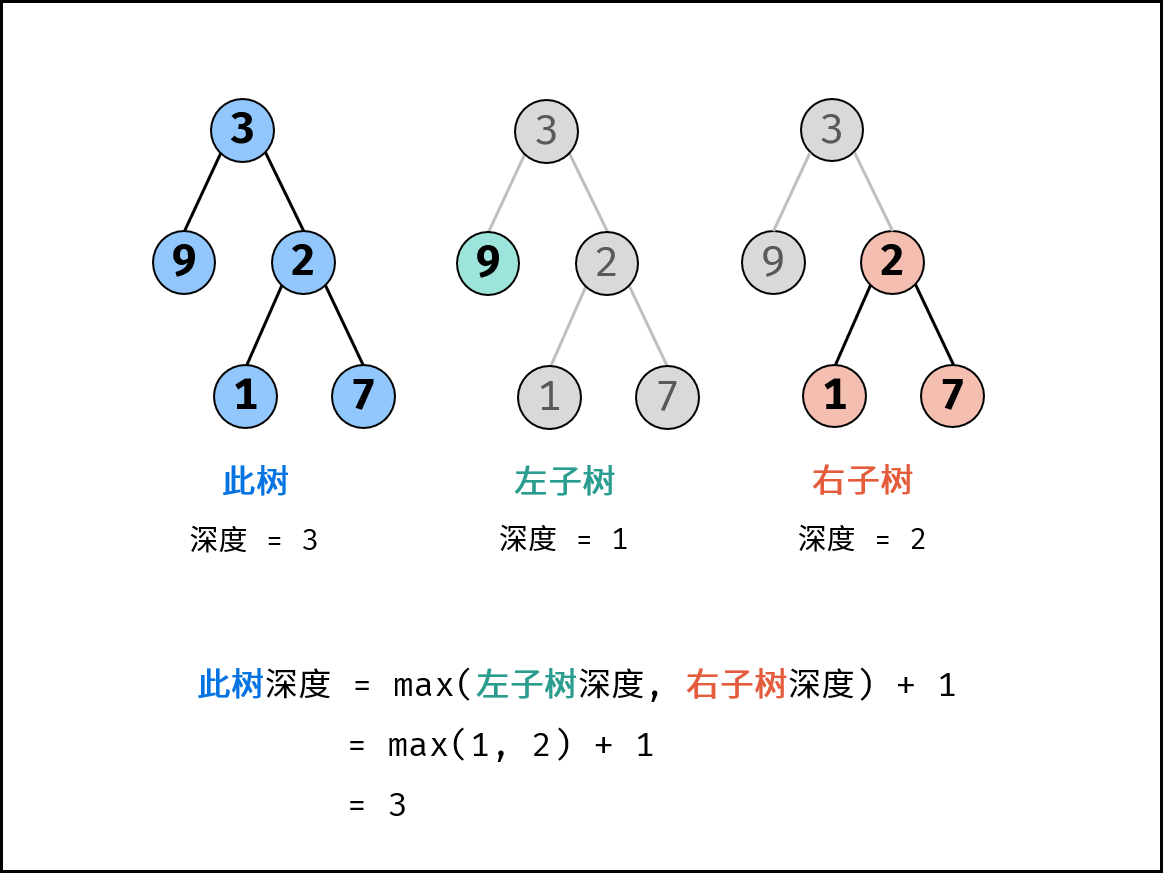
方法一:后序遍历 + 剪枝 (从底至顶)
此方法为本题的最优解法,但剪枝的方法不易第一时间想到。
思路是对二叉树做后序遍历,从底至顶返回子树深度,若判定某子树不是平衡树则 “剪枝” ,直接向上返回。
算法流程:
函数 recur(root) :
- 返回值:
- 当节点
root左 / 右子树的深度差 $\leq 1$ :则返回当前子树的深度,即节点root的左 / 右子树的深度最大值 $+1$ (max(left, right) + 1)。 - 当节点
root左 / 右子树的深度差 $> 1$ :则返回 $-1$ ,代表 此子树不是平衡树 。
- 当节点
- 终止条件:
- 当
root为空:说明越过叶节点,因此返回高度 $0$ 。 - 当左(右)子树深度为 $-1$ :代表此树的 左(右)子树 不是平衡树,因此剪枝,直接返回 $-1$ 。
- 当
函数 isBalanced(root) :
- 返回值: 若
recur(root) != -1,则说明此树平衡,返回 $true$ ; 否则返回 $false$ 。
< ,
,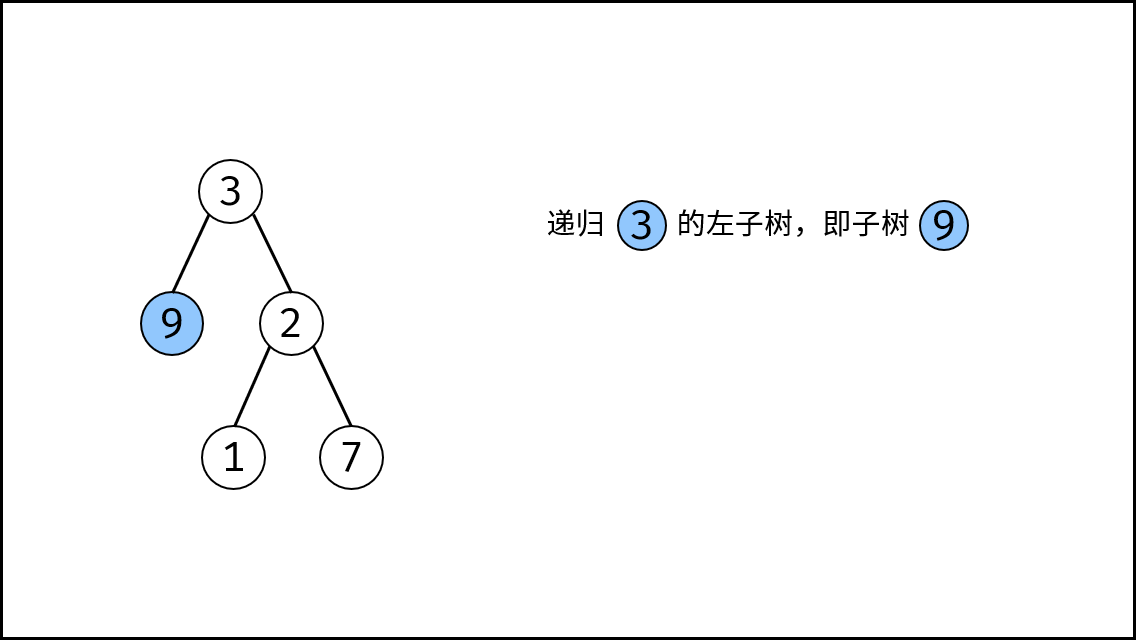 ,
,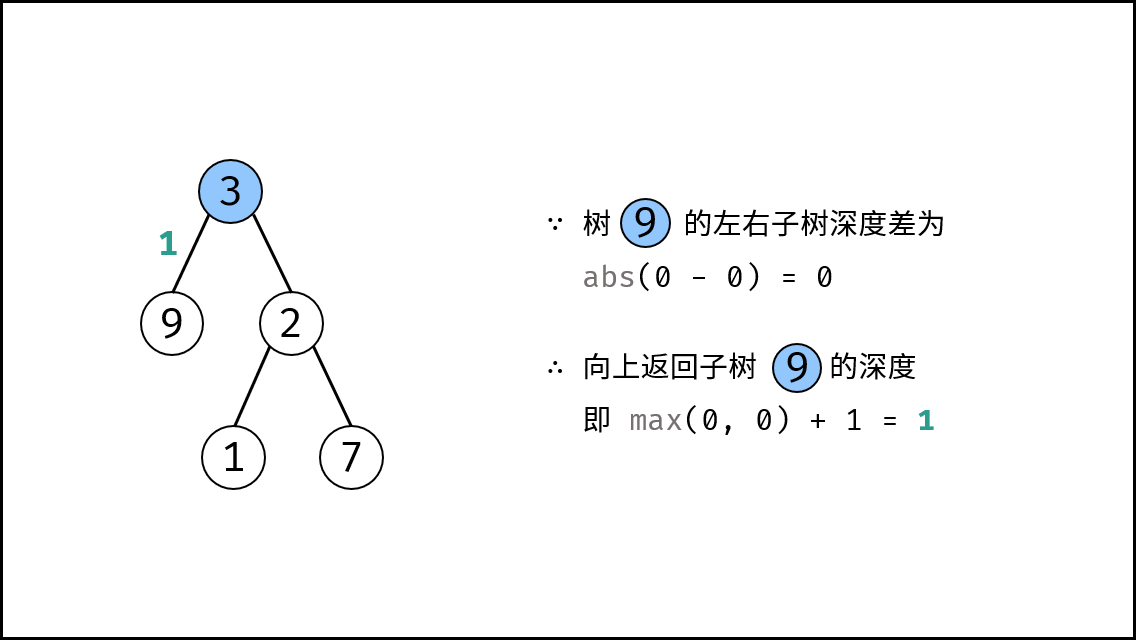 ,
,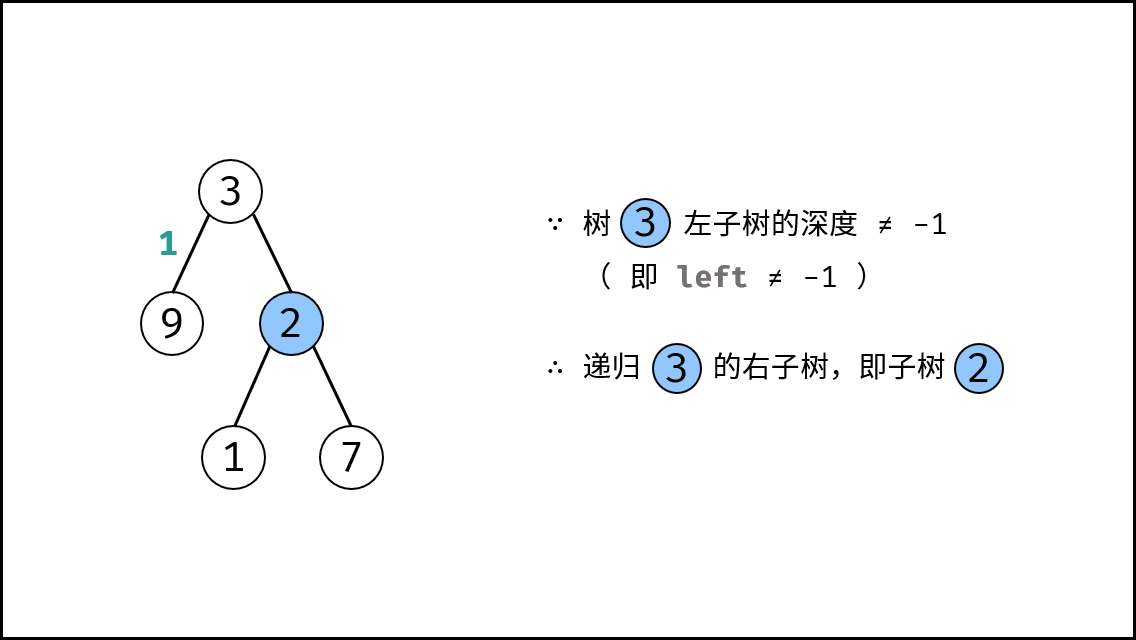 ,
,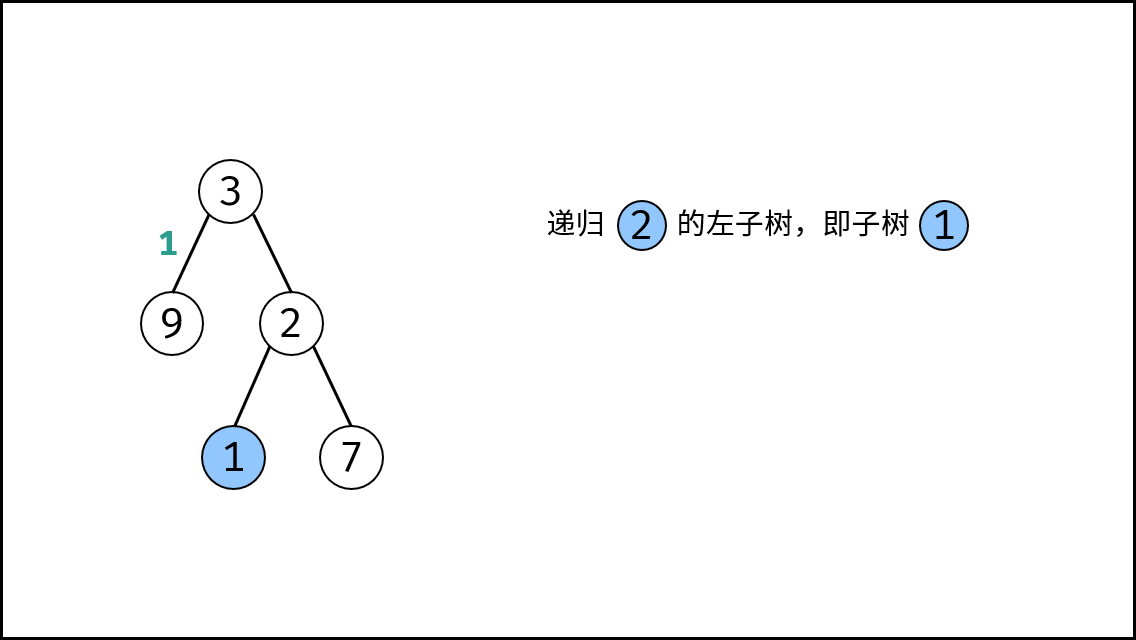 ,
,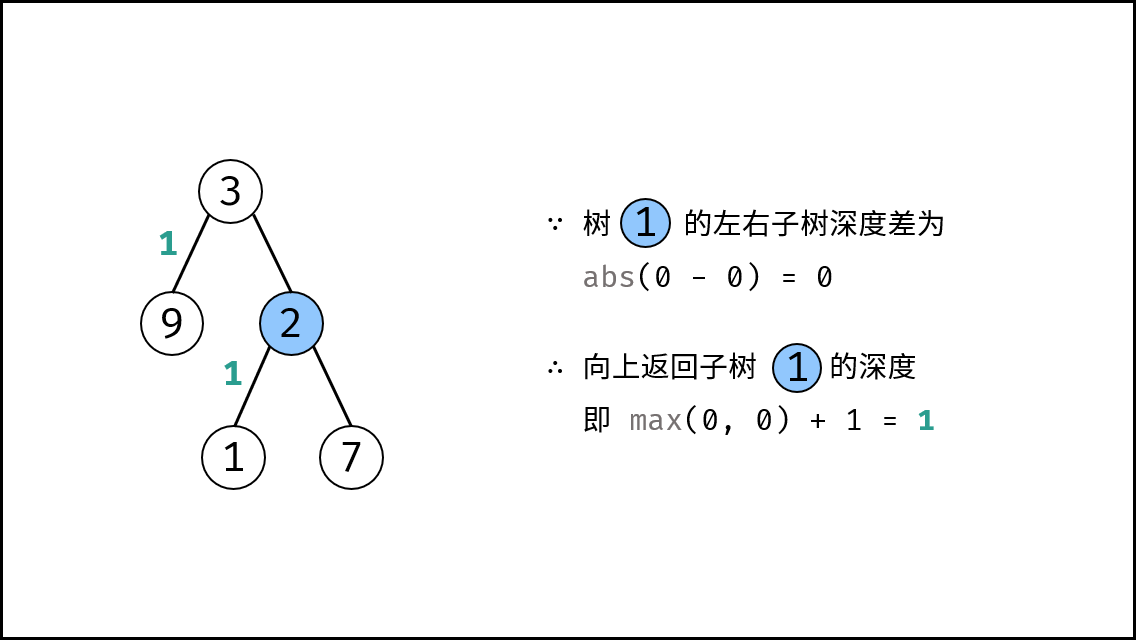 ,
,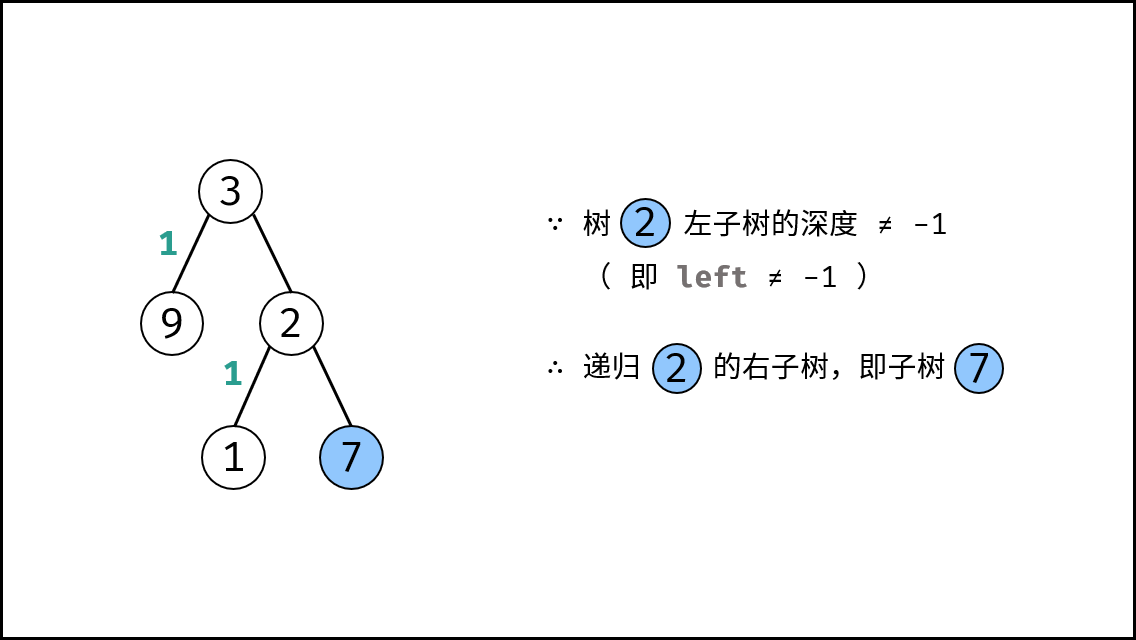 ,
,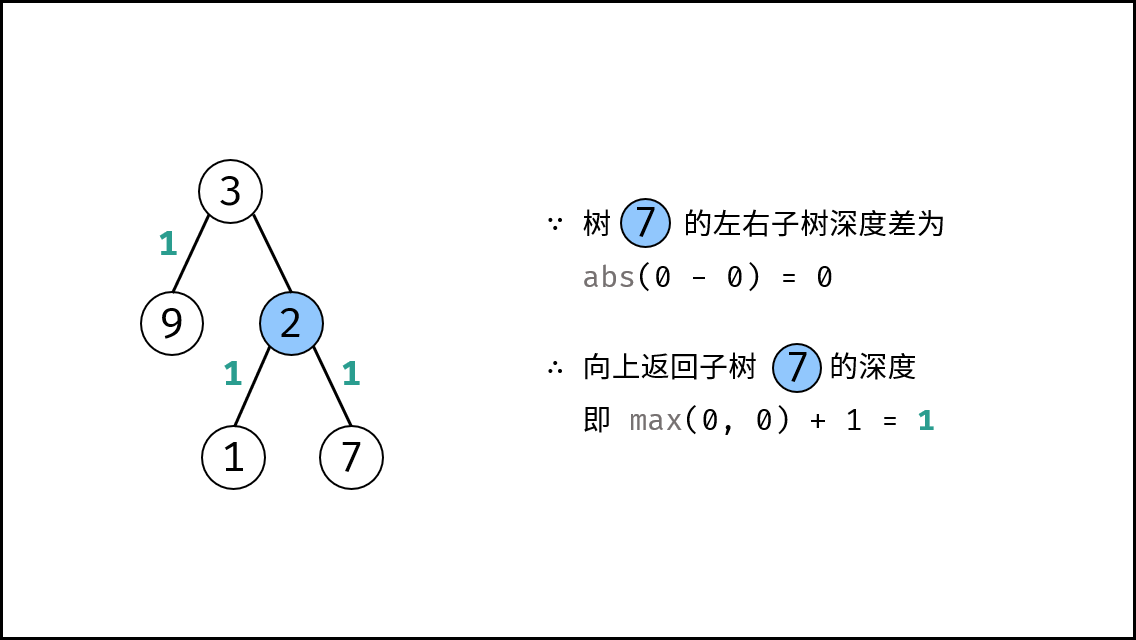 ,
,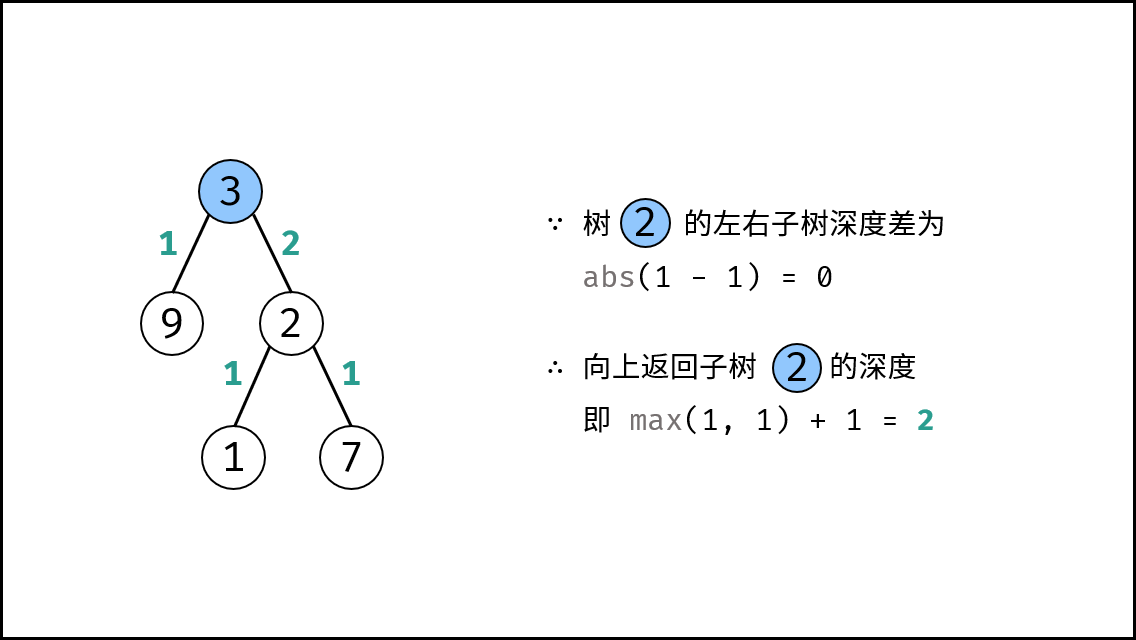 ,
,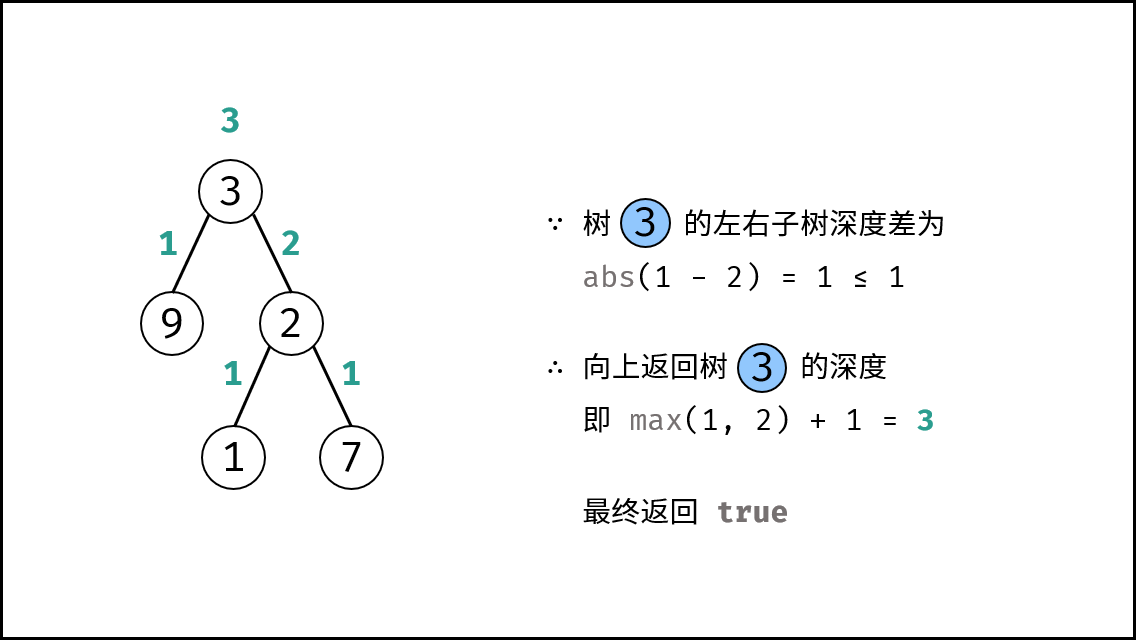 >
>
代码:
Python
class Solution:
def isBalanced(self, root: Optional[TreeNode]) -> bool:
def recur(root):
if not root: return 0
left = recur(root.left)
if left == -1: return -1
right = recur(root.right)
if right == -1: return -1
return max(left, right) + 1 if abs(left - right) <= 1 else -1
return recur(root) != -1Java
class Solution {
public boolean isBalanced(TreeNode root) {
return recur(root) != -1;
}
private int recur(TreeNode root) {
if (root == null) return 0;
int left = recur(root.left);
if (left == -1) return -1;
int right = recur(root.right);
if (right == -1) return -1;
return Math.abs(left - right) < 2 ? Math.max(left, right) + 1 : -1;
}
}C++
class Solution {
public:
bool isBalanced(TreeNode* root) {
return recur(root) != -1;
}
private:
int recur(TreeNode* root) {
if (root == nullptr) return 0;
int left = recur(root->left);
if (left == -1) return -1;
int right = recur(root->right);
if (right == -1) return -1;
return abs(left - right) < 2 ? max(left, right) + 1 : -1;
}
};复杂度分析:
- 时间复杂度 $O(N)$: $N$ 为树的节点数;最差情况下,需要递归遍历树的所有节点。
- 空间复杂度 $O(N)$: 最差情况下(树退化为链表时),系统递归需要使用 $O(N)$ 的栈空间。
方法二:先序遍历 + 判断深度 (从顶至底)
此方法容易想到,但会产生大量重复计算,时间复杂度较高。
思路是构造一个获取当前子树的深度的函数 depth(root) ,通过比较某子树的左右子树的深度差 abs(depth(root.left) - depth(root.right)) <= 1 是否成立,来判断某子树是否是二叉平衡树。若所有子树都平衡,则此树平衡。
算法流程:
函数 isBalanced(root) : 判断树 root 是否平衡
- 特例处理: 若树根节点
root为空,则直接返回 $true$ 。 - 返回值: 所有子树都需要满足平衡树性质,因此以下三者使用与逻辑 $&&$ 连接。
abs(self.depth(root.left) - self.depth(root.right)) <= 1:判断 当前子树 是否是平衡树。self.isBalanced(root.left): 先序遍历递归,判断 当前子树的左子树 是否是平衡树。self.isBalanced(root.right): 先序遍历递归,判断 当前子树的右子树 是否是平衡树。
函数 depth(root) : 计算树 root 的深度
- 终止条件: 当
root为空,即越过叶子节点,则返回高度 $0$ 。 - 返回值: 返回左 / 右子树的深度的最大值 $+1$ 。
<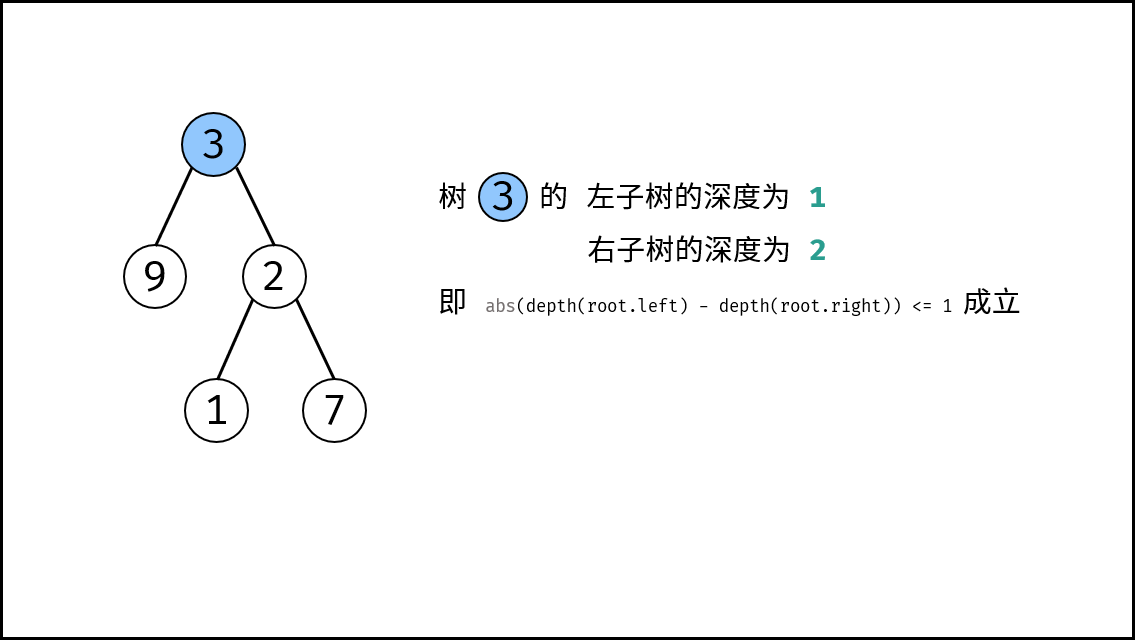 ,
, ,
, ,
, ,
,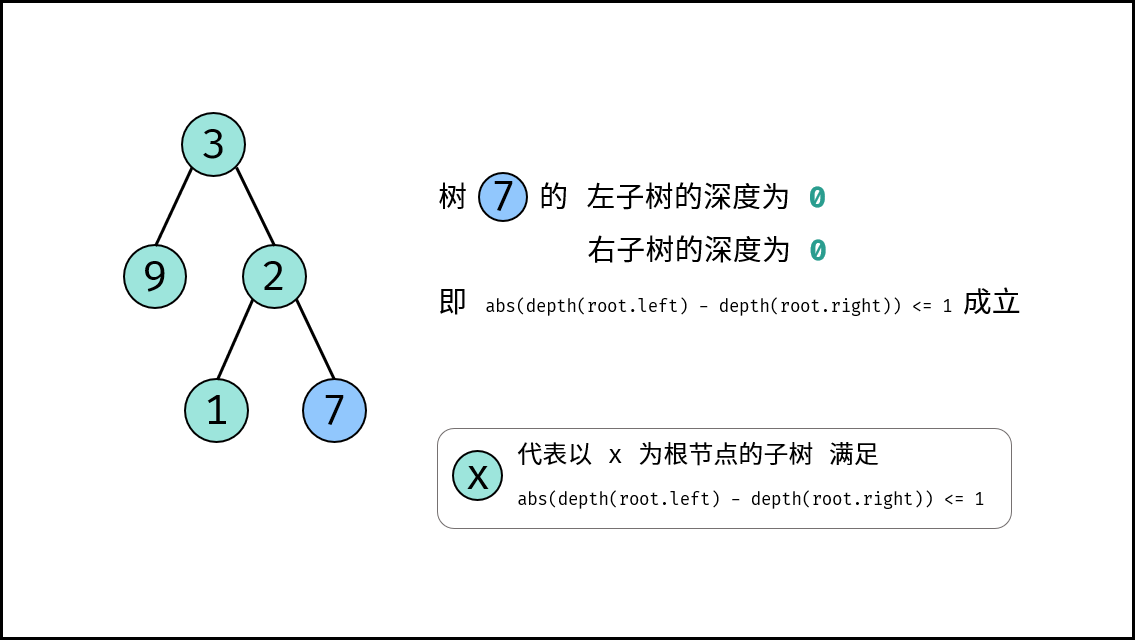 ,
,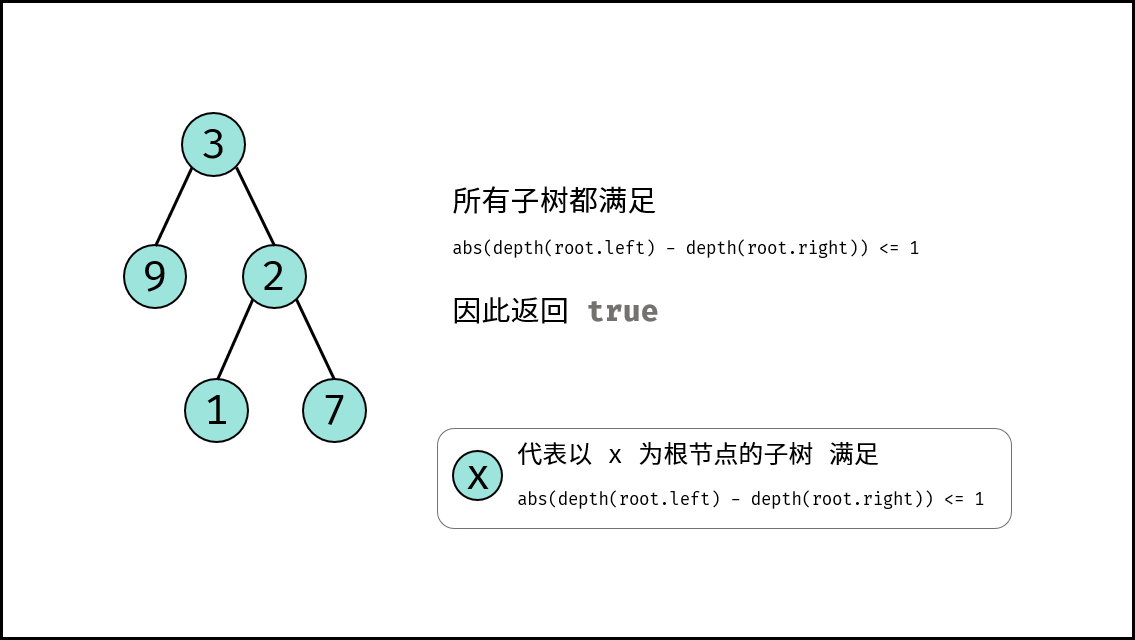 >
>
代码:
Python
class Solution:
def isBalanced(self, root: Optional[TreeNode]) -> bool:
if not root: return True
return abs(self.depth(root.left) - self.depth(root.right)) <= 1 and \
self.isBalanced(root.left) and self.isBalanced(root.right)
def depth(self, root):
if not root: return 0
return max(self.depth(root.left), self.depth(root.right)) + 1Java
class Solution {
public boolean isBalanced(TreeNode root) {
if (root == null) return true;
return Math.abs(depth(root.left) - depth(root.right)) <= 1 && isBalanced(root.left) && isBalanced(root.right);
}
private int depth(TreeNode root) {
if (root == null) return 0;
return Math.max(depth(root.left), depth(root.right)) + 1;
}
}C++
class Solution {
public:
bool isBalanced(TreeNode* root) {
if (root == nullptr) return true;
return abs(depth(root->left) - depth(root->right)) <= 1 && isBalanced(root->left) && isBalanced(root->right);
}
private:
int depth(TreeNode* root) {
if (root == nullptr) return 0;
return max(depth(root->left), depth(root->right)) + 1;
}
};复杂度分析:
- 时间复杂度 $O(N \log N)$: 最差情况下(为 “满二叉树” 时),
isBalanced(root)遍历树所有节点,判断每个节点的深度depth(root)需要遍历 各子树的所有节点 。- 满二叉树高度的复杂度 $O(log N)$ ,将满二叉树按层分为 $log (N+1)$ 层。
- 通过调用
depth(root),判断二叉树各层的节点的对应子树的深度,需遍历节点数量为 $N \times 1, \frac{N-1}{2} \times 2, \frac{N-3}{4} \times 4, \frac{N-7}{8} \times 8, ..., 1 \times \frac{N+1}{2}$ 。因此各层执行depth(root)的时间复杂度为 $O(N)$ (每层开始,最多遍历 $N$ 个节点,最少遍历 $\frac{N+1}{2}$ 个节点)。
其中,$\frac{N-3}{4} \times 4$ 代表从此层开始总共需遍历 $N-3$ 个节点,此层共有 $4$ 个节点,因此每个子树需遍历 $\frac{N-3}{4}$ 个节点。
- 因此,总体时间复杂度 $=$ 每层执行复杂度 $\times$ 层数复杂度 = $O(N \times \log N)$ 。
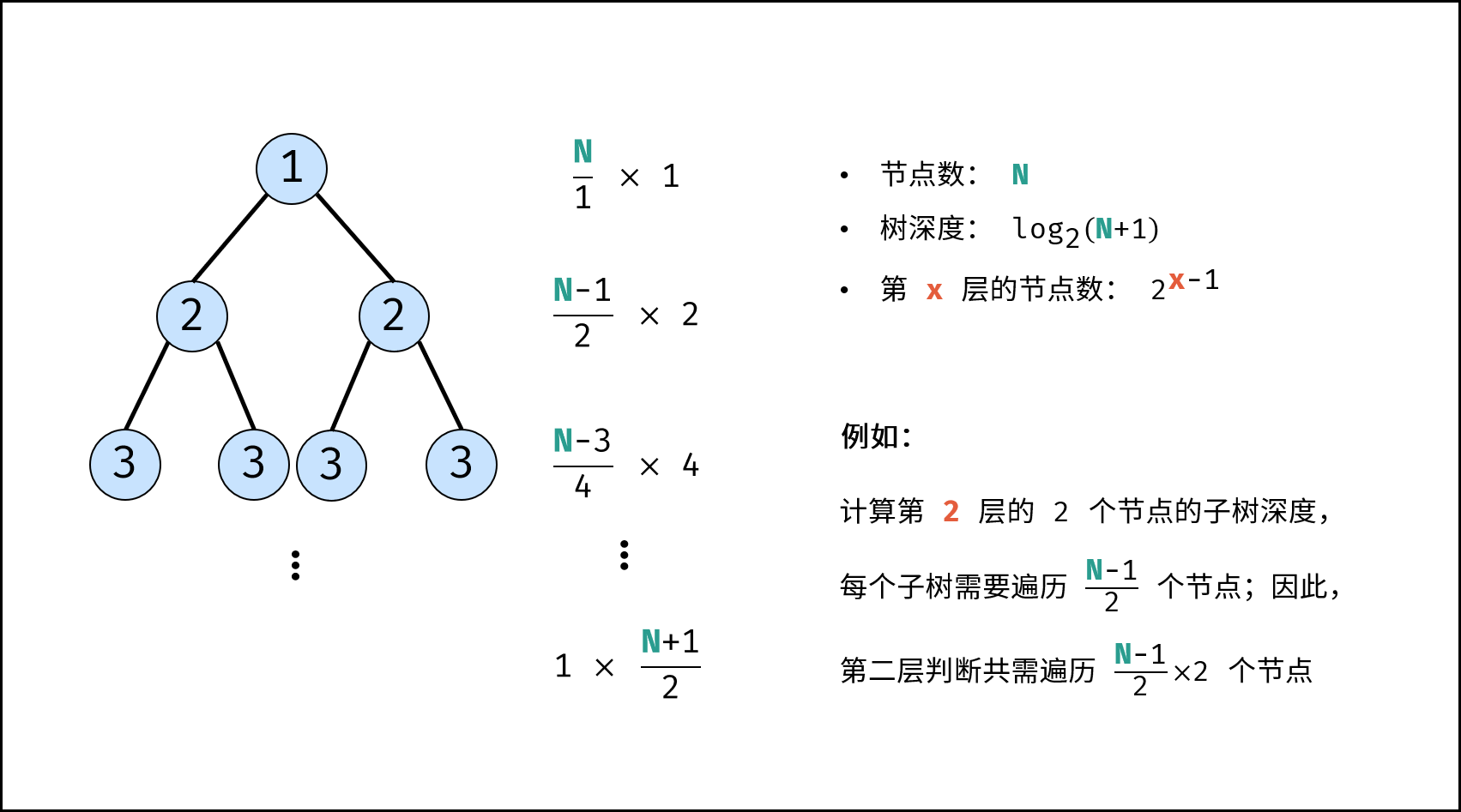
- 空间复杂度 $O(N)$: 最差情况下(树退化为链表时),系统递归需要使用 $O(N)$ 的栈空间。